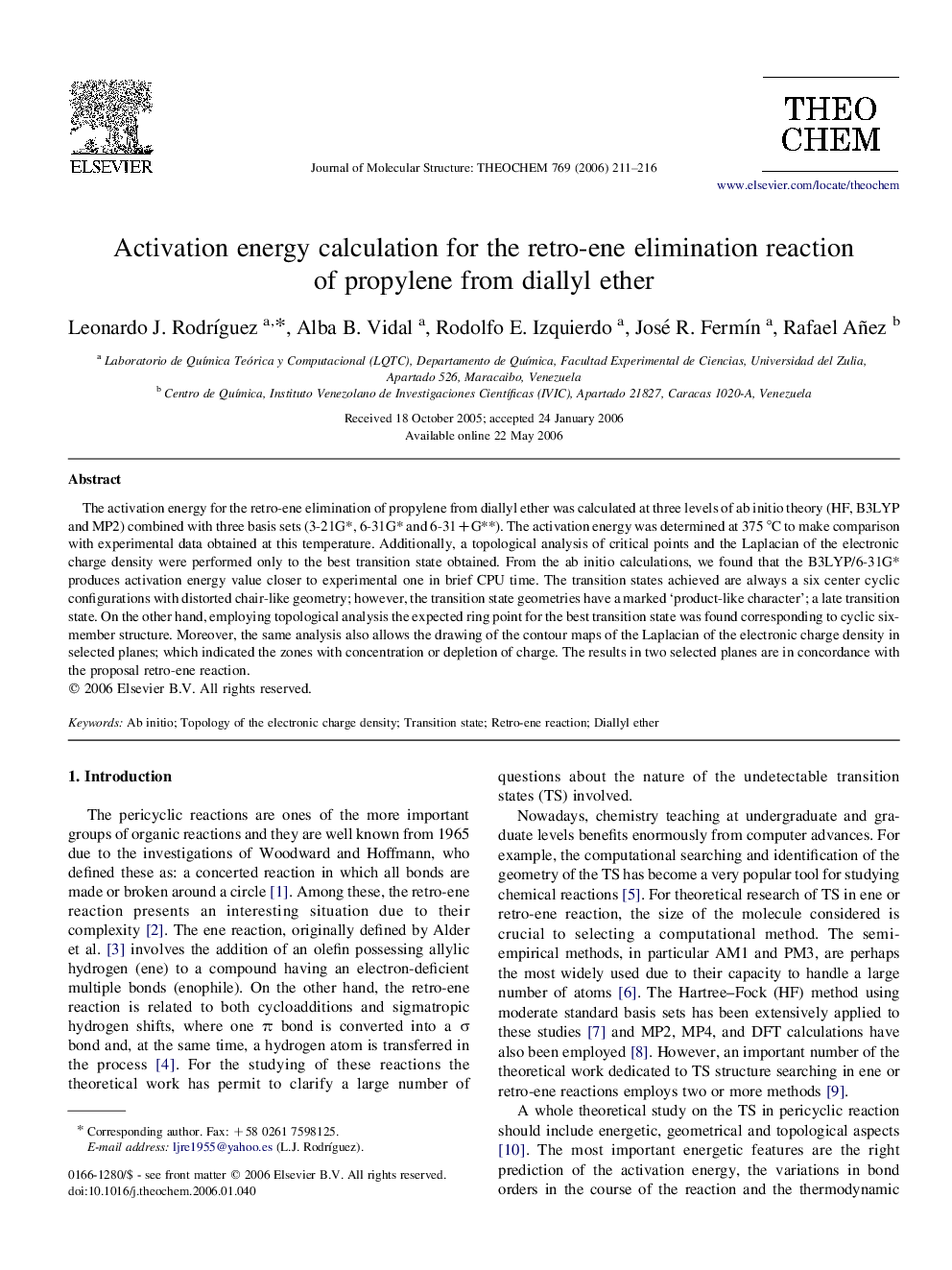| Article ID | Journal | Published Year | Pages | File Type |
|---|---|---|---|---|
| 5419412 | Journal of Molecular Structure: THEOCHEM | 2006 | 6 Pages |
Abstract
The activation energy for the retro-ene elimination of propylene from diallyl ether was calculated at three levels of ab initio theory (HF, B3LYP and MP2) combined with three basis sets (3-21G*, 6-31G* and 6-31+G**). The activation energy was determined at 375 °C to make comparison with experimental data obtained at this temperature. Additionally, a topological analysis of critical points and the Laplacian of the electronic charge density were performed only to the best transition state obtained. From the ab initio calculations, we found that the B3LYP/6-31G* produces activation energy value closer to experimental one in brief CPU time. The transition states achieved are always a six center cyclic configurations with distorted chair-like geometry; however, the transition state geometries have a marked 'product-like character'; a late transition state. On the other hand, employing topological analysis the expected ring point for the best transition state was found corresponding to cyclic six-member structure. Moreover, the same analysis also allows the drawing of the contour maps of the Laplacian of the electronic charge density in selected planes; which indicated the zones with concentration or depletion of charge. The results in two selected planes are in concordance with the proposal retro-ene reaction.
Related Topics
Physical Sciences and Engineering
Chemistry
Physical and Theoretical Chemistry
Authors
Leonardo J. RodrÃguez, Alba B. Vidal, Rodolfo E. Izquierdo, José R. FermÃn, Rafael Añez,
